We have published several articles that do not recommend the use of walker for babies, causing many mothers to discuss it.
Many mothers said: Now the walker has been upgraded. It’s okay. It’s okay.
Not long ago, National Public Radio (NPR) reported publicly that American pediatricians once again called for a ban on baby walkers because walkers still cause harm to infants.
Pediatrician Benjamin Hoffman, chairman of the Injury and Poisoning Prevention Committee of the American Academy of Pediatrics, said: “I think baby walkers are inherently dangerous and have no benefits. They should not be sold in the United States.”
Today, let’s take a look at a pediatrician’s realistic thoughts on whether children should learn to walk with a walker.
Accidental injuries are nearby.
Ten years ago, when I was on the night shift for the first time, I met a baby who was accidentally injured by using a walker.
The baby is 8 months old and uses a walker in the yard.
There is a large cesspool in the yard. Usually, the sewage from the toilet flows into the cesspool, and the leftovers and other garbage are also poured into it.
The baby walked to the edge of the cesspool with the walker. There was a step on the edge. The walker overturned in the first gear on the step. Causing the baby’s head to fall down into the cesspool.
As a result, it is conceivable that the baby inhaled a large amount of sewage and excrement, resulting in drowning excrement. Fortunately, the rescue was timely and the baby was finally rescued.

Similarly, according to a report by Ningbo News Network, on August 28 this year, an 11-month-old baby was sitting on a walker playing when he grabbed the thermos bottle on the table and was scalded, causing the whole back, buttocks, thighs and skin to become red and peeling.
From the above two examples, it can be seen that even though there are dereliction of duty in parental care, it has to be said that walker is also an important factor leading to baby injury, because the above situation is not an example.
Harm of Walker
As early as 2004, Canada banned the manufacture, sale and import of baby walkers. The reason is very simple. Baby walkers are extremely easy to cause harm to infants.
According to a survey by the American Association of Pediatrics (AAP), from 1990 to 2014, about 230,676 babies < 15 months old in the United States received emergency treatment due to baby walkers (this is not counting injured babies who did not enter the emergency treatment). Among them, 90.6% of the infants suffered head and neck injuries and 4.5% of the infants suffered upper limb injuries.
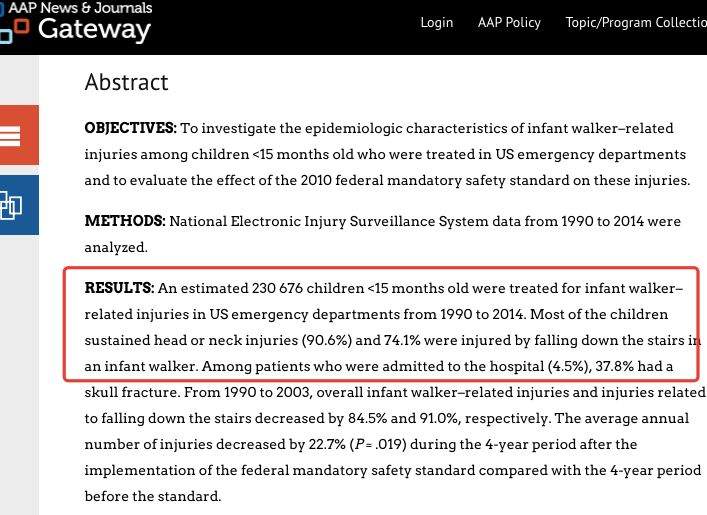
According to the cause of injury, the majority (74.1%) of infants were injured because they fell from the stairs while using the walker.
In fact, as early as 2010, the U.S. Consumer Product Safety Commission (CPSC) issued the [Federal Mandatory Safety Standard] for baby walkers, which strictly controls the width, braking mechanism and quality of baby walkers.
The width of the walker frame is required to be wider than that of the standard door so that it cannot pass through the door smoothly. In addition, as long as one wheel is at the edge of the steps, the walker will start the brake device to prevent the baby from falling.
The effect was immediate after the introduction of the safety standards: compared with the previous four years, in the four years after the implementation of the federal mandatory safety standards, the annual average number of infant walker-related injuries decreased by 22.7%, of which the annual average number of falls from stairs decreased by 40.7%.
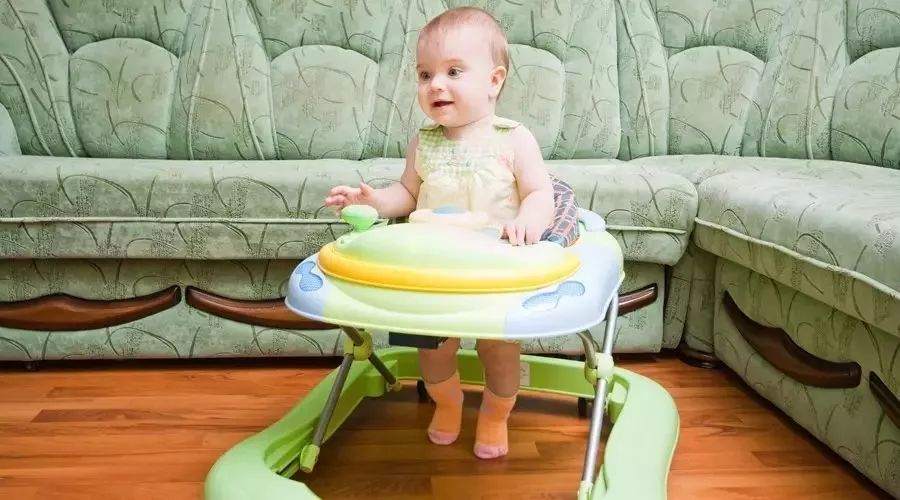
However, baby walkers are still an important and preventable source of baby injuries, so the report at the beginning of the article-the American Academy of Pediatrics (AAP) once again called for a ban on the manufacture and sale of walkers in the United States.
There are also many reports of injuries caused by the use of walkers in our country:
In March 2012, a 9-month-old baby in Xining, Qinghai, died instantly because the walker slipped down the stairs.
In October 2013, a 10-month-old baby in Shandong was scalded extensively by boiling water because a walker knocked over thermos flask.
On June 9, 2014, CCTV’s < < Focus Interview > > column reported a case of intracranial hemorrhage of a baby caused by the use of a walker.
… …


Why is the walker dangerous?
For babies who cannot walk yet, the walker seems to have opened the door to a new world for them. Babies can go to many places with the help of the walker and can easily drive to dangerous places.
You know, the speed of the walker can exceed 1 m/s, because the baby’s head accounts for a large proportion of the body, the upper body is heavy, and it is exposed outside the body, it is easy to overturn or roll when encountering the step environment.
It is precisely because the walker is too fast that even if the guardian sees the danger approaching, it is too late to respond.
The most common is to rush down stairs or steps, causing baby trauma. Many can cause fractures and even intracranial hemorrhage, such as the case reported by CCTV.

In addition to falling down stairs or steps, burns are also common, because babies can come into contact with dangerous goods, such as hot water bottles, knives and harmful substances on high places, with the height and speed of walkers.
The risks reported by the American Academy of Pediatrics (AAP) include:
- Turn down the steps: The wheels of the walker roll easily when they encounter steps, carpet edges or other obstacles on the ground. Children have no ability to protect themselves at all. Once the walker rolls over, The first injury was the child’s head. Burn: The walker supports the child’s hips, widening the child’s vision and access to things. If parents do not take precautions in advance, the child is likely to pull the tablecloth, burn himself by the hot water on the table, or knock over the thermos bottle. Drowning: Outside, the walker overturns on the steps of the swimming pool or pool, and the child is likely to fall into the water.
Can walkers really teach babies to walk?
Many parents buy walkers because they think they can [teach] their babies to walk. In fact, there is no study showing that babies who use walkers learn to walk earlier than babies who do not use walkers.
On the contrary, from the law of baby’s growth and development, the walker violates the law of baby’s growth and development from turning over, sitting, climbing, standing and walking.

Due to the help of the walker, the baby will not fall down even if he cannot control his balance, which is not conducive to the baby’s practice of independent walking and balance control and affects the normal development of the baby’s body muscles.
European experts have investigated 190 babies and found that 102 babies who use walkers are 3-4 weeks behind babies who have not used walkers in crawling and walking upright.
At the same time, if the walker straddles the cloth too high, causing the baby to walk on tiptoe, it is easy to walk on tiptoe when the baby can walk independently, causing adverse effects on the baby.
However, if the span cloth is too low, the muscles that maintain the arch of the foot cannot bear their own weight and stand for a long time, the arch of the foot will collapse and form flatfoot. If flatfoot is formed, it will also have adverse effects on the development of knee joint, hip joint and spine.
In addition, the author also does not recommend other toddler aids-toddler carts and toddler belts.
The reason is that, similar to the toddler’s trolley, it is difficult for the baby to control the speed of the toddler’s trolley. The trolley slides quickly. If it encounters steps and other places, the baby will easily fall down.
At the same time, if the push rod of the cart is set too high, the baby must stand on tiptoe to push, which will also cause adverse effects on the baby.
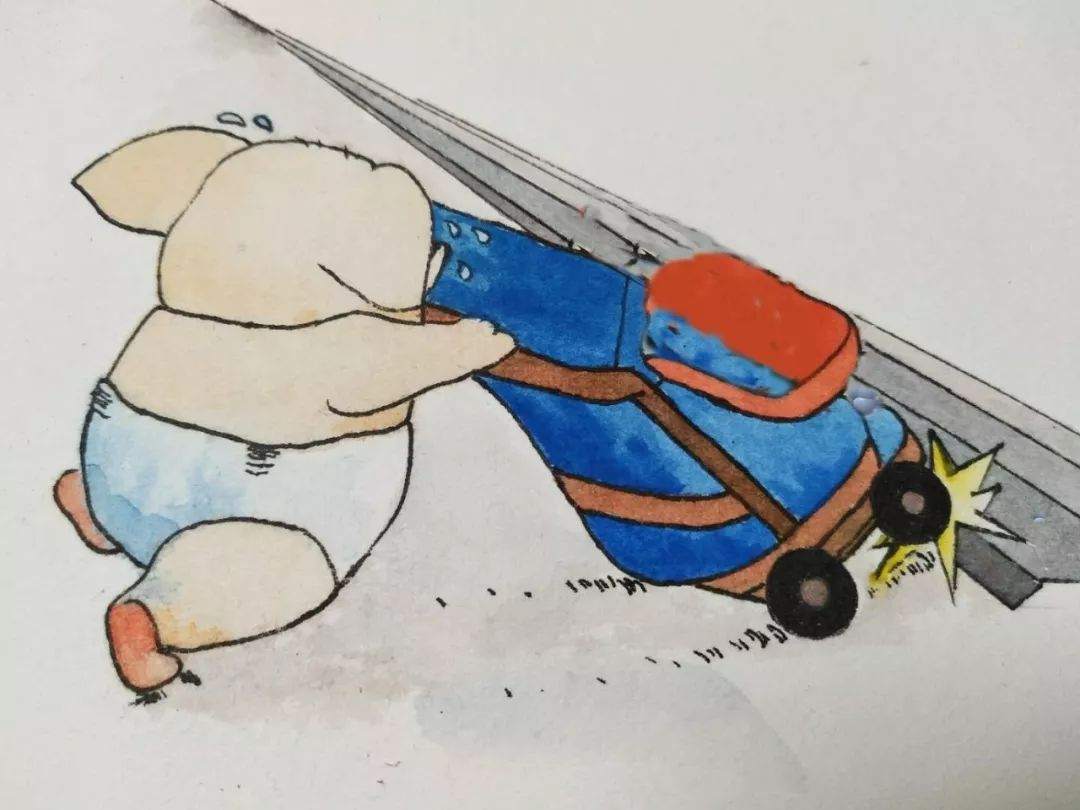
The toddler belt is also easy to make the baby walk on tiptoe, because parents are easy to pull the toddler belt too high. At the same time, supported by the pulling force of the toddler belt, the baby is easy to walk stagger, which is not conducive to the mastery of leg strength and balance ability.
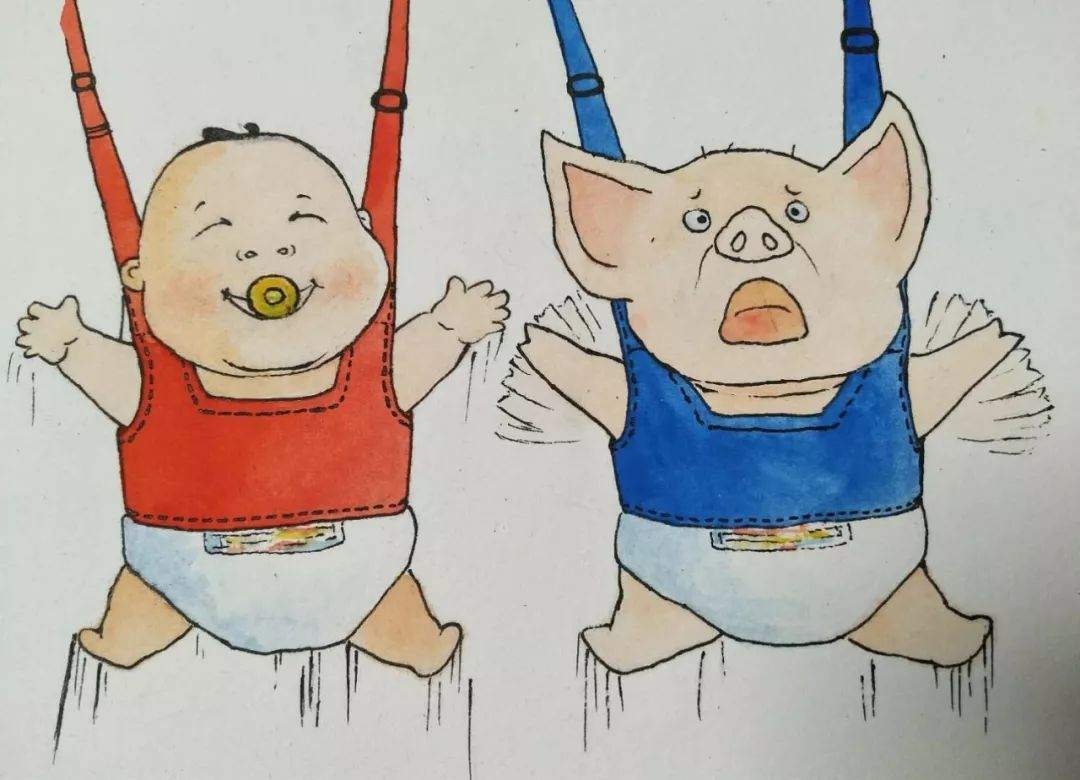
In fact, walking is a very natural process in the process of children’s physical development. Parents can encourage and assist them, but they do not need to study deliberately, and it is not recommended to use other toddler aids to promote them.
If what is really recommended to practice walking safely, it is suggested that after the baby can stand, he/she can hold the fixed railing, the edge of the bed or the edge of the lower table to practice walking.
Throw away the walker!
China officially implemented the “Safety Requirements for Baby Walker (GB14749-2006) > > on January 1, 2007, and also made relevant regulations on walker.
In 2011, the European Commission’s non-food rapid warning system issued a consumer warning to Chinese-made walkers. In 2011, China’s Ministry of Health issued a document saying that walkers were not recommended.
However, if you open a large shopping website in China and search for [toddler], there will be more than hundreds of pop-up merchants, and you will open one casually with a sales volume of tens of thousands.
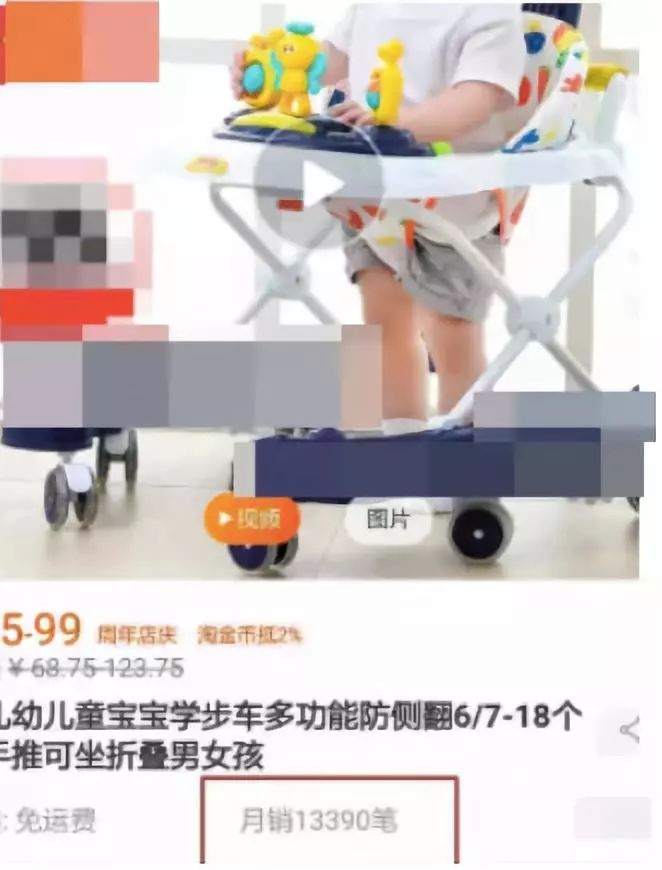
Obviously, although walker has long been proved to have potential safety hazards, domestic sales are still not low.
The reason for this is that besides some parents still have fantasies about its [toddler] function, another important factor is that in the eyes of many parents, the toddler will indeed reduce the burden of taking care of children and [free hands].

The author hereby advises all parents that auxiliary tools such as walker will only bring you a false sense of security, and do not put your baby in danger for the sake of relaxation.
Finally, please believe that if you think you can stop the danger in time, watch your children and ensure that your children will not be in danger when using the walker, then you are believing in myth!
So, if you have already bought a walker, throw it out quickly!
